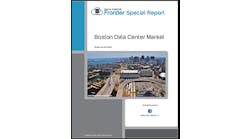Opportunity Awaits: Asia-Pacific's Surge in Data Center Development and Innovation
In an episode of 'Mad Men,' the advertising executives at the heart of the show are eager to win the business of a car brand – any car brand. But when they are invited to pitch work to a Japanese car manufacturer better known for their scooters and motorcycles, the executives do not take the opportunity as seriously as they should because they don't recognize the changes already happening in the late 1960s global auto industry. And as such missed out on a significant global launch.
Until recently, a lot of attention, activity, and capital related to the data center industry has been aimed at markets in the Americas and Europe, while investment in the Asia Pacific region over the past decade has lagged by comparison. That is changing – and changing quickly.
Today, many regional markets are emerging as major opportunity centers. A little over a year ago, Singapore ended its data center moratorium and earlier this year announced a new roadmap to adding 300MW of capacity in the near term. And markets like Johor and Jakarta are projected to grow by up to 300% over the next five years.
And the number of markets in the region that are seeing interest from hyperscalers, and data center providers is rapidly expanding to include Korea, Kuala Lumpur, Manila, Osaka, Thailand, and wider markets like Taiwan and Vietnam.
This expansion is in response to the phenomenal demand generated by a regional population estimated to be close to four billion people, many living on islands, with rising living standards and an increasing reliance on Cloud, AI, and other Internet-based services. The need for networking, data, computing power, and communications in a sprawling, diverse, ambitious part of the globe that is, in some places, just beginning to exert influence and compete in the digital economy worldwide, is driving the need for data center capacity that can deliver information, entertainment, and business solutions virtually anywhere.
At the same time, governments and community leaders in the region are sensitive to the need for sustainable development that uses clean energy sources and recognizes the unique ecosystems found in Asia-Pacific countries. By 2030, renewable sources are projected to help provide between 30% and 50% of the power grid mix in the region, with a combination of solar, wind, and hydroelectric solutions. But it is important to note that these percentages will vary – perhaps widely – from country to country.
In the ‘Mad Men’ example above, the agency’s motivation was simple and self-serving: sign a logo that would convince prospective clients that the agency was a major player in the advertising world.
For data center providers, the Asia-Pacific region offers many opportunities:
- The region has billions of consumers, millions of entrepreneurs, and thousands of established businesses poised to become global brands. And in many cases, these people, start-ups, and corporations are only beginning to plug in to the world’s digital economy, ready to become both customers and suppliers at a massive scale.
- For hyperscalers, who are also some of the largest customers of data center services around the globe, these new people and businesses will create tremendous demand for the Cloud, Content, and AI services that will drive unprecedented demand for data center capacity.
- For many parts of the region there are greenfield opportunities for network connectivity, green energy, and smart building, without the ballast of outdated legacy services that can delay the emergence of new, smart solutions.
- The economies of scale involved in the Asia-Pacific region can also provide lessons in how to reduce the costs associated with building and operating data centers under a wide variety of climates and conditions.
The opportunities are tremendous in virtually every aspect of data center development in the Asia-Pacific region. They offer a chance for data center providers to help their own customers to gain a lasting presence in one of the fastest-growing markets in the world as the region projects large investments and vast expansions in capacity, connectivity, and power generation. And many of the local businesses that may be small today will have the chance to grow into large data center customers themselves.

Phillip Marangella
Phillip Marangella is Chief Marketing and Product Officer for EdgeConneX. EdgeConneX, is a global data center provider focused on driving innovation. Contact EdgeConneX to learn more about their 100% customer-defined data center and infrastructure solutions.






